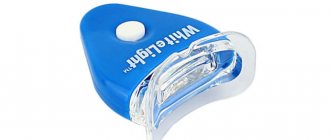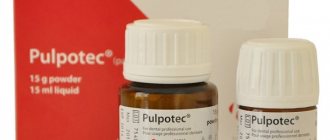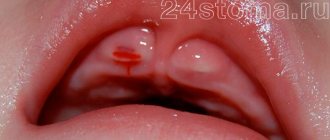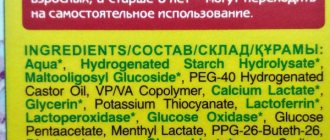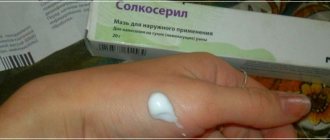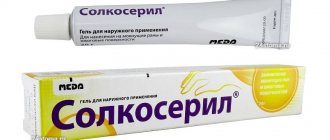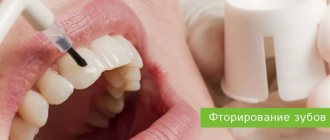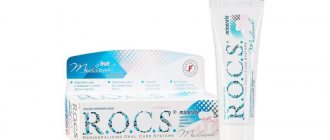"Traumel" is a medicinal product that is produced in the form of a gel and medicine. Contains extracts of more than 10 plants. It has analgesic and anti-inflammatory effects. Apply to intact (no wounds) skin with a small strip up to 5-6 times a day.
"Traumel": description, composition
The medicine "Traumel" is produced in the form of a gel, as well as in other forms:
- ointment;
- drops;
- injection;
- pills.
The drug is a homeopathic remedy that contains extracts of various plants:
- yarrow;
- comfrey;
- witch hazel;
- belladonna;
- aconite;
- calendula;
- arnica;
- comfrey;
- chamomile;
- echinacea;
- St. John's wort;
- daisy.
Water and paraffin are present as auxiliary components. Thanks to its rich chemical composition, the product has a complex effect on the body:
- prevents pain;
- promotes tissue restoration;
- inhibits inflammatory processes;
- strengthens the immune system;
- improves metabolism.
You can store the ointment and gel at room temperature up to 25-30 degrees. The place should be dark, without direct penetration of sunlight. Access for children is prohibited. The shelf life is 3 years. In this case, tablets, drops and solution can be used for 5 years from the date of production.
Contraindications and side effects
The product has a completely natural composition, however, in some cases it cannot be used:
- allergic reactions due to individual intolerance;
- tuberculosis;
- leukemia;
- autoimmune diseases, including AIDS;
- multiple sclerosis.
Side effects are not observed so often, however, they are not excluded:
- itching in the area where the composition is applied;
- slight swelling;
- redness.
The described signs are clear symptoms of allergies. In these cases, ointment or gel should not be applied. They refuse the course and, if necessary, consult a doctor for consultation. The drug may need to be replaced.
The creation of a large number of new highly effective drugs is due to the achievements of modern medicine in the prevention and treatment of many serious diseases, both in general and in dental practice. Along with successes, new problems have emerged: the higher the activity of the drug, the more pronounced its side effects. Physicians and patients are concerned about a significant increase in complications from drug therapy, which prompts the search for alternative treatment methods [1].
Homeopathic medicines are increasingly used to treat various dental diseases. The homeopathic method of treatment is approved for use in the state healthcare system by order of the Ministry of Health and Medical Industry of the Russian Federation dated November 29, 1995 [2].
Homeopathy is a treatment system created at the beginning of the 19th century by the German physician Samuel Hahnemann [3]. He considered the symptoms of the disease not a manifestation of a pathogenic factor, but a protective reaction of the body. By counteracting this defensive reaction, allopathic medicine prevents the patient from being completely cured. At the same time, when using a homeopathic drug that causes the “most similar” picture of the disease in the body of a healthy subject, it is not suppression that occurs, but the activation of adaptation mechanisms to restore the disturbed homeostasis in the body. The selection of homeopathic medicines should be carried out strictly individually, taking into account not only all existing symptoms of the disease, but also the characteristics of the patient’s somatic and emotional reactions to various influences (heat, cold, wind, dampness, stress, etc.). As a result, collecting an anamnesis and selecting the “most similar” drug takes a lot of time and requires highly qualified doctors, so classical homeopathy is unlikely to be widespread in dental practice in the near future.
The possibilities for using homeopathic medicines have expanded in recent years due to the creation of official laboratory-developed complex antihomotoxic drugs that can be used by doctors who do not specialize in homeopathy [4].
Homotoxicology is one of the alternative areas of medical science; it is a synthesis of modern advances in medicine and the homeopathic approach to treating patients.
The founder of the direction and method of homotoxicology as a complex therapy was the German physician and scientist Hans-Heinrich Reckeweg in 1948-1949. According to his theory, the body is an open biological system striving for balance. However, the balance can be disrupted, according to the theory of homotoxicosis, by endogenous and exogenous toxins (homotoxins).
Taking into account the three most important aspects of the theory: regulatory impact on an open biological system; binding and removing substances toxic to the body and, finally, stimulating its defenses, a number of drugs were created - complex biological antihomotoxic drugs. The main manufacturer is (Baden-Baden, Germany).
Antihomotoxic drugs are prepared from natural components: extracts from plants, extracts from animal organs, sterilized cultures of microorganisms, minerals, trace elements, catalysts, etc. All these components are processed according to the principles of homeopathic potentization technology, i.e. methods of sequential dilution and dynamization of components. In antihomotoxic drugs, like homeopathic ones, the biologically active principle is not concentrated substances, but their microdoses. Microdoses entering the body do not overload the body, but, on the contrary, stimulate its systems and activate additional protective mechanisms.
In dental practice, the homeopathic drug Traumeel S (Latin - Traumeel S.) (Germany) is successfully used.
The drug Traumeel S contains components of plant and mineral origin: arnica, calendula, witch hazel, millefolium, belladonna, aconite, Mercurius solubilis hahnemann, hepar sulfur, chamomilla, symphytum, bellis perennis, echinacea purpurea and hypericum.
Traumeel S is prescribed for diseases of the musculoskeletal system, inflammatory and degenerative diseases of the joints, periarticular tissues and muscles (myositis, myalgia, osteoarthritis, osteochondrosis, tenosynovitis, bursitis, epicondylitis, periarthritis); various injuries of joints, muscles, periarticular tissues; bruises, sprains, dislocations, hemorrhages, bone fractures, swelling after operations or after injuries, periodontitis, periodontal disease, gingivitis.
The antihomotoxic agent Traumeel S is available in four dosage forms: ointment, drops, tablets and solution for injection. Ointment, tablets and drops are over-the-counter drugs that are sold freely and are approved for self-use by patients.
Traumeel S has the following complex of actions: anti-inflammatory, antiexudative, immunostimulating, regenerating, analgesic, antihemorrhagic, venotonic agent.
The anti-inflammatory activity of Traumeel S is comparable to the effectiveness of classical non-steroidal anti-inflammatory drugs (NSAIDs), but the homeopathic drug Traumeel S has fewer side effects.
Numerous therapeutic effects of the drug Traumeel S are due to the following mechanisms:
- anti-inflammatory effects are exerted by herbal components such as Aconite and Arnica, and components containing homeopathic doses of mercury, Mercurius solubilis Hahnemann; they make the vessel wall dense and, accordingly, reduce swelling and the formation of effusions;
— Aconitum, Arnica, Hamamelis, Hypericum, Millefolium
have hemostatic properties in case of injuries and prevent the formation of hematomas and hemorrhages;
- simultaneously Aconite, Arnica
and
Hypericum
together with
Chamomilla
have an analgesic effect;
— Hepar sulfur
and plant components such as
Arnica, Calendula, Echinacea
and
Symphytum,
activate metabolic processes and help tissues regenerate and recover.
Contraindications:
Hardly ever. It is not recommended to use the drug Traumeel C for persons with allergies to the components that make up the drug.
Traumeel C ointment: hypersensitivity to Arnica,
the appearance of skin rashes at the site of application of the ointment, violation of the integrity of the skin.
Solution for injection Traumeel C: hypersensitivity to Compositae.
Traumeel S should not be used for systemic diseases such as tuberculosis, leukemia, collagenosis, multiple sclerosis, AIDS.
Use during pregnancy and lactation:
Traumeel S, like other homeopathic medicines, should be used during pregnancy and lactation only after prior consultation with a doctor.
Side effects:
Traumeel S is virtually free of side effects.
Possible arthralgia - joint pain (with injections of Traumeel S; can be relieved with anti-inflammatory therapy and local anesthetics);
— hypersalivation (in case of increased salivation, it is necessary to stop using the drug);
- allergic skin reactions requiring discontinuation of the drug (including hypersensitivity to Asteraceae).
Special instructions and precautions:
It is not recommended to use Traumeel S ointment on large areas of the body.
Drug interactions:
the effectiveness of Traumeel S therapy increases with the simultaneous use of several dosage forms of the drug.
The prescription of complex homeopathic medicines, including Traumeel S, does not exclude the use of other medicines used for a particular disease.
The antihomotoxic drug Traumeel S is widely used in a variety of fields of medicine.
Traumeel S occupies one of the leading places in the arsenal of drugs in sports traumatology.
A large number of studies conducted at the Goethe Institute in Frankfurt am Main according to the most stringent standards using placebo and double-blind control have proven the effectiveness of Traumeel S in patients with ankle sprains, arthrosis, hematomas, tendon inflammation (tenosynovitis), compactions muscles (myogelosis), bruises, swelling, inflammation of the periarticular bursae (bursitis) and other joint diseases that are often found in professional athletes [5].
The use of Traumeel S in the form of local blockades is a fairly effective means of stopping both paroxysmal pain and permanent sensoropathic syndrome in the most common types of prosopalgia (trigeminal neuralgia and glossalgia) and can be successfully used in practice [6].
Traumeel S ointment, when applied topically, in contrast to Flexen gel and 10% butadione ointment, increases the content of IgA and slgA in the saliva of patients suffering from catarrhal gingivitis and periodontitis, which indicates an improvement in the state of local immunity in the oral cavity when using this drug [7].
In a comparative assessment of the anti-inflammatory and immunostimulating effects of a number of homeopathic drugs: Traumeel S, Engystola and Echinacea compositum C in the treatment of moderate periodontitis, it was proven that the drug Traumeel S has the maximum effectiveness, which helps to improve the clinical picture, normalize the composition of the microflora of periodontal pockets, and increase the functional activity of granulocytes and correction of microcirculatory disorders in gum tissue to a greater extent than other homeopathic medicines [8].
The effectiveness of complex treatment of gingivitis and periodontitis of mild and moderate severity using the homeopathic drug Traumeel S in the form of an injection along the transitional fold was assessed by biochemical methods of studying oral fluid.
There was a decrease in the activity of lactate dehydrogenase in oral fluid by 22.5%, aspartate aminotransferase by 1.2 times, and alanine aminotransferase by 44%. Carrying out all stages of professional oral hygiene and the action of the active components of the homeopathic drug Traumeel S can reduce inflammation in periodontal tissues [9].
A clinical dental examination of helicopter pilots of the Russian Armed Forces was carried out. It was revealed that the prevalence of inflammatory periodontal diseases is 67.3%. A plan and method of complex treatment of periodontitis in helicopter pilots using the homeopathic drug Traumeel S have been developed. Under the influence of treatment using the drug Traumeel S, a significant decrease in clinical indices is observed. The drug Traumeel S has a pronounced anti-inflammatory, immunomodulatory and antioxidant effect [10].
The relationship and interdependence of stomatitis, chronic recurrent aphthous stomatitis, lichen planus, pemphigus and other types of lesions of the oral cavity and pathology of the digestive system have been noted by many authors [13, 14]. This is due to the similarity of the morphological structure and the commonality of their functions, since the oral cavity is the initial section of the digestive system. The main treatment for these diseases is the administration of NSAIDs. Among the complications when prescribing NSAIDs are allergic reactions in the oral cavity (erythema multiforme, including Stevens-Jones syndrome), as well as toxic epidermal necrolysis (Lyle syndrome). Similar changes, which are even more severe, were observed after glucocorticoid therapy, which causes suppression of the immune status, which can lead to ulceration of the mucous membrane of the oral cavity and gastrointestinal tract, the development of dysbiosis, candidiasis and pyoderma.
Despite the presence of a wide arsenal of highly active drugs used in the treatment of diseases of the oral mucosa against the background of gastrointestinal pathology, traditionally used treatment does not always give the desired results; acute inflammatory processes can turn into subacute and chronic, and in severe cases it is often observed only a temporary improvement in the patient’s condition, followed by a relapse of the disease.
The clinical situations described above indicate the need to search for new approaches to the treatment of diseases of the oral mucosa. One of them is antihomotoxic therapy.
Conducted studies aimed at studying the therapeutic effectiveness of complex antihomotoxic drugs Traumeel S in the treatment of chronic recurrent aphthous stomatitis, herpetic gingivostomatitis, fissures of the lip and various forms of lichen planus confirm the effectiveness, good tolerability and safety of the drug Traumeel S, which allows us to consider antihomotoxic therapy as an alternative to conventional treatment methods [11].
According to world literature, the prevalence of periodontal diseases reaches 98%, and among people with diabetes - 100%. The pathological process in the periodontium in patients with diabetes mellitus is characterized by frequent exacerbations. Local symptoms are signs of active inflammation in periodontal tissues.
The introduction of new highly active drugs makes it possible to achieve certain successes, but the problem of treating inflammatory processes in dentistry is far from being resolved, especially in the chronic course of the process [15]. One of the reasons for this is the significant increase in the number of complications from drug therapy.
The homeopathic drug Traumeel S, used in the complex treatment of periodontitis in diabetes mellitus and in patients with normal glucose tolerance but at risk of developing diabetes mellitus, has a pronounced anti-inflammatory effect on the periodontal condition [12].
However, in the literature we have studied, information about the effectiveness of the drug Traumeel S in the complex treatment of inflammatory periodontal diseases is rare. In addition, there is practically no data on how the composition of oral fluid, enzyme activity and the concentration of immunoglobulins in saliva changes after surgical treatment of chronic periodontitis and the use of homeopathic medicines.
Gel "Traumel": instructions for use
To use the ointment (cream), it is applied to the injured part of the body or to the area of inflammation 2-3 times a day. If inflammatory processes or injury have worsened, it is recommended to rub in up to 6 times a day. This should be done with your fingertips, gently pressing on the integumentary tissue. Then a bandage is applied. Another option for administration is with phonophoresis.
The ointment is also used to treat skin with other minor injuries. The composition can be applied in all cases, with the exception of wounds with infections or suppuration. The course continues daily for 2, 3 or 4 weeks. Next there is a break. The decision to continue therapy must be agreed with your doctor.
The gel is applied to the affected area in the morning and evening. If necessary, the number of procedures is increased to 3-4 per day. A typical 1 cm long strip of gel is applied to an area of about 10 cm2. The composition can only be used to treat intact skin - it is not used in the presence of open wounds. The total duration of therapy is 10 days.
Special instructions and drug interactions
If these rules are followed, Traumeel gel and ointment are completely safe for health. They give allergic reactions only in rare cases of individual intolerance. If taken in excess, itching and redness may also occur.
Drug interactions between the drug and other medications have not been described. However, the mutual influence of certain drugs on each other cannot be ruled out. Therefore, if a patient regularly takes certain medications, it is recommended that he consult a doctor before starting the course.
How can you replace Traumeel?
During teething, you can use Kalgel, Dentokind, Dentinox, Baby Doctor instead of Traumeel.
For adults: Parodontocide, Cholisal, Metrogyl Denta, Asepta, Chlorhexidine, Troxevasin, Mundizal, Tsiprolet, Dental drops, Denta-drops.
Any analogue should be approved by the attending physician, and not on the advice of a pharmacist.
